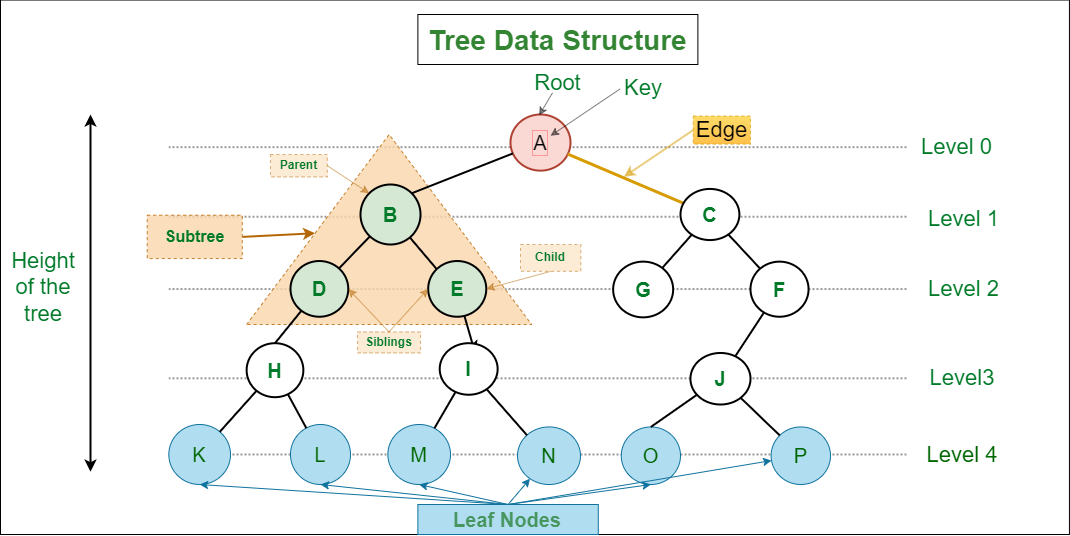Tree Data Structure

A tree data structure is a hierarchical data structure composed of nodes connected by edges. It consists of a collection of nodes, where each node stores a value or data and may have zero or more child nodes. Trees are widely used in computer science and are essential for representing hierarchical relationships and organizing data efficiently.
Key features of a tree data structure include:
Root Node: The topmost node of the tree, which serves as the starting point for traversing the tree. A tree has exactly one root node.
Parent and Child Nodes: Nodes in a tree are connected by edges, where each edge represents a relationship between a parent node and its child node. A node may have zero or more child nodes.
Internal Nodes and Leaf Nodes: Internal nodes are nodes that have at least one child node, while leaf nodes (also called terminal nodes) are nodes that have no child nodes.
Depth and Height: The depth of a node is the number of edges from the root node to that node. The height of a node is the number of edges on the longest path from the node to a leaf node. The height of the tree is the height of the root node.
Subtree: A subtree is a tree formed by selecting a node and all its descendant nodes. Every node in a tree is the root of its own subtree.
Binary Trees: A binary tree is a special type of tree in which each node has at most two children: a left child and a right child. Binary trees are commonly used in various algorithms and data structures.
Binary Search Trees (BST): A binary search tree is a binary tree in which the value of each node is greater than all values in its left subtree and less than all values in its right subtree. BSTs enable efficient searching, insertion, and deletion operations.
Balanced Trees: Balanced trees are trees in which the heights of the left and right subtrees of every node differ by at most one. Examples include AVL trees, red-black trees, and B-trees, which ensure efficient performance for various operations.
Trees are used in a wide range of applications, including file systems, hierarchical data representation, database indexing, expression parsing, decision-making algorithms, and more. They provide a flexible and efficient way to organize and manipulate data, making them a fundamental concept in computer science.
Thank you,